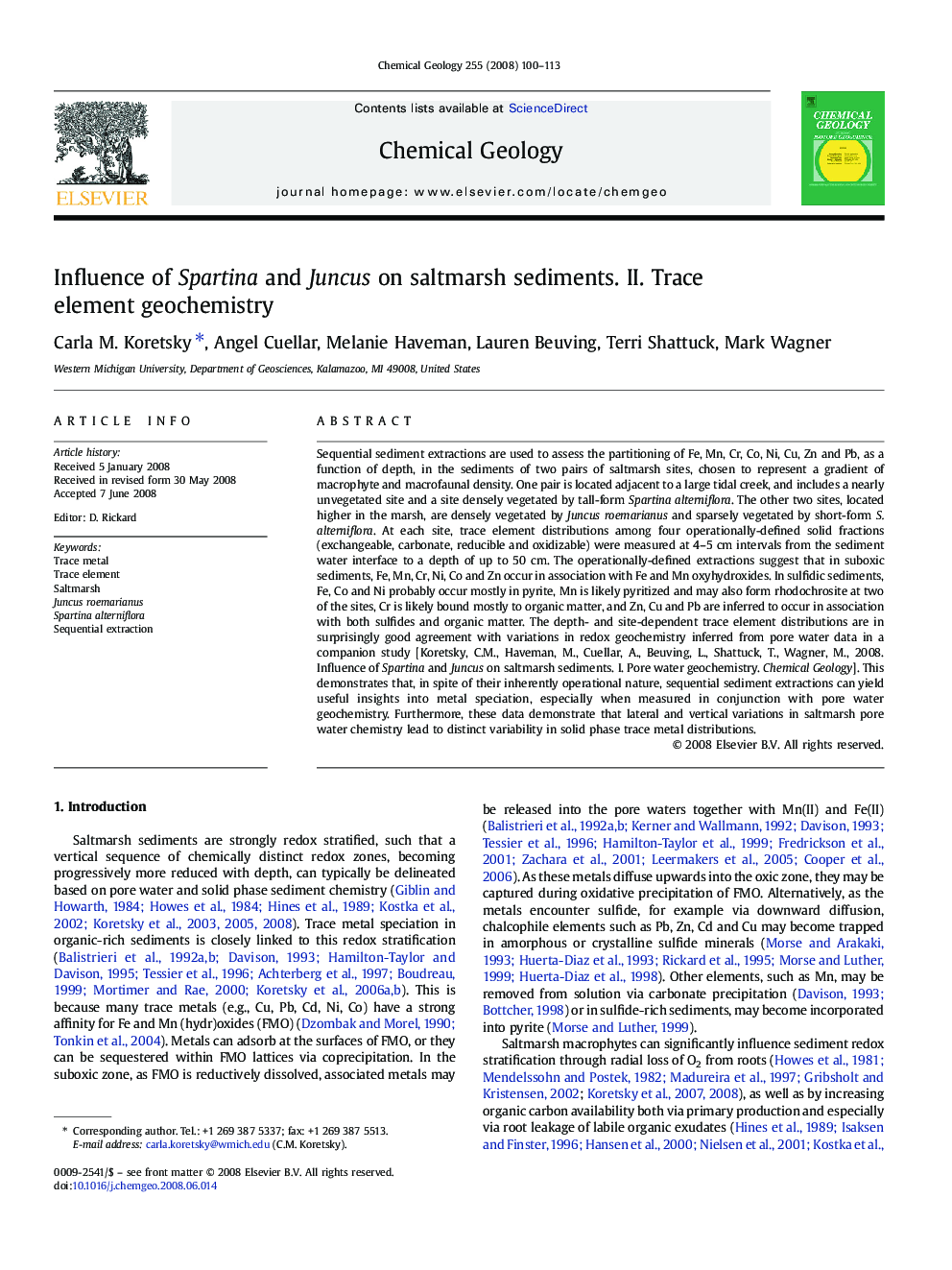| کد مقاله | کد نشریه | سال انتشار | مقاله انگلیسی | نسخه تمام متن |
|---|---|---|---|---|
| 4700671 | 1637722 | 2008 | 14 صفحه PDF | دانلود رایگان |

Sequential sediment extractions are used to assess the partitioning of Fe, Mn, Cr, Co, Ni, Cu, Zn and Pb, as a function of depth, in the sediments of two pairs of saltmarsh sites, chosen to represent a gradient of macrophyte and macrofaunal density. One pair is located adjacent to a large tidal creek, and includes a nearly unvegetated site and a site densely vegetated by tall-form Spartina alterniflora. The other two sites, located higher in the marsh, are densely vegetated by Juncus roemarianus and sparsely vegetated by short-form S. alterniflora. At each site, trace element distributions among four operationally-defined solid fractions (exchangeable, carbonate, reducible and oxidizable) were measured at 4–5 cm intervals from the sediment water interface to a depth of up to 50 cm. The operationally-defined extractions suggest that in suboxic sediments, Fe, Mn, Cr, Ni, Co and Zn occur in association with Fe and Mn oxyhydroxides. In sulfidic sediments, Fe, Co and Ni probably occur mostly in pyrite, Mn is likely pyritized and may also form rhodochrosite at two of the sites, Cr is likely bound mostly to organic matter, and Zn, Cu and Pb are inferred to occur in association with both sulfides and organic matter. The depth- and site-dependent trace element distributions are in surprisingly good agreement with variations in redox geochemistry inferred from pore water data in a companion study [Koretsky, C.M., Haveman, M., Cuellar, A., Beuving, L., Shattuck, T., Wagner, M., 2008. Influence of Spartina and Juncus on saltmarsh sediments. I. Pore water geochemistry. Chemical Geology]. This demonstrates that, in spite of their inherently operational nature, sequential sediment extractions can yield useful insights into metal speciation, especially when measured in conjunction with pore water geochemistry. Furthermore, these data demonstrate that lateral and vertical variations in saltmarsh pore water chemistry lead to distinct variability in solid phase trace metal distributions.
Journal: Chemical Geology - Volume 255, Issues 1–2, 30 September 2008, Pages 100–113